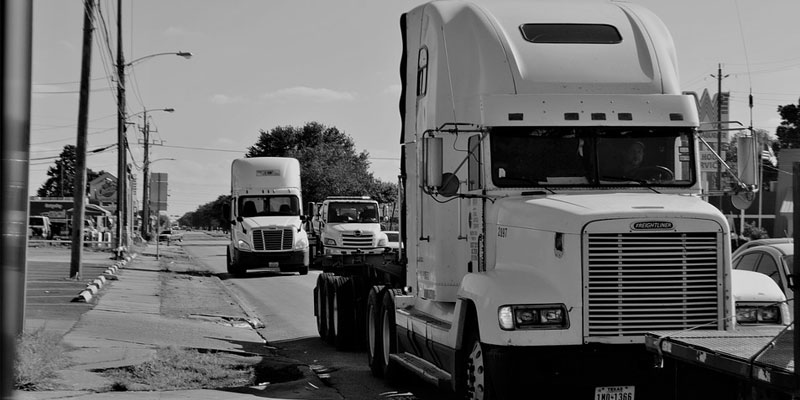The Alabama legislature lowered the minimum age for a truck driver’s (CDL) license to 18 for within-state transport (the minimum age remains 21 in interstate trucking) to help alleviate a driver shortage the American Trucking Associations (ATA) says has existed since 2005. Trucking has long been a major employer in Alabama and Pike County. What are the economics of this shortage and the future of trucking?
Trucking contributes enormously to our economy. Seventy percent of freight, over 10 billion tons annually, ships via trucks. Our modern economy could not exist without reliable truck transportation; any uncertainty would render just-in-time production impractical.
News reports for years have noted trucking companies’ struggles to hire drivers. The most visible have been ads on tractor-trailers encouraging drivers to switch jobs for better pay and working conditions. Our economy shows few signs of a shortage of transport, as stores have remained stocked and factories operating.
About 1.7 million people drive “heavy” trucks requiring CDLs, while 1.3 million more drive light delivery trucks. About half of the heavy truck drivers work for trucking companies serving many customers. Most of the remaining drivers work for companies which ship a great deal of freight. Some drivers work as independent owner-operators.
According to the Bureau of Labor Statistics, heavy truck drivers earn $44,000 per year. But experienced CDL drivers earn more than $60,000 and team drivers over $70,000. These are solid salaries for “blue collar” jobs requiring only a high school degree.
Why then is there a shortage of truck drivers? As an economist, I find the ATA’s claim of a 15-year shortage noteworthy. Economists expect that prices or salaries will rise to quickly eliminate shortages and fall to eliminate surpluses. What’s going on?
Part of the answer may arise from different uses of the term shortage. A recent economic analysis finds that the market for heavy truck drivers has been tight but not in shortage. The ATA estimates the shortage at around 50,000 drivers, or just three percent of all heavy truck drivers. A trucking company can lose business if ever short on drivers and may perceive difficulty hiring as a serious shortage.
Truck driver salaries have risen, as we would expect in a shortage, 25 percent between 2005 and 2016, versus a 19 percent increase for all other blue collar jobs. Yet this is a modest increase relative to oil industry salaries during the shale boom. The 14 percent decline in employment during the 2008 recession shows that there were more drivers than loads during a portion of the driver shortage.
The training drivers require could potentially limit the supply. Aspiring truckers can learn driving by paying (or borrowing) up to $7,000 for a truck driving school or signing on for training from a trucking company paid for through a lower first-year salary. Access to training seems unlikely to significantly limit supply.
Long hours and extensive travel constitute a more significant limit. Days on the road make having a life, and particularly a family, difficult. Truckers must be paid extra to accept these undesirable working conditions. And factoring in the unpleasant conditions makes the good pay more apparent than real.
Truckers create tremendous value, but the demands of the job heavily burden people. Self-driving trucks might resolve this dilemma. Robot drivers will not miss being away from their family. Artificial intelligence will likely automate jobs people find particularly unpleasant.
Self-driving technology could be a boon to truckers. Experts suggest that the technology will be operational on rural interstates long before for urban driving. If so, trucks could drive autonomously between cities, with truckers driving across urban areas. A trucker driving rigs across Birmingham all day could go home every night. Autonomous trucks may not initially reduce the number of drivers, rather change driving arrangements.
Efficient, reliable truck transport has enabled America’s prosperity and lifted millions of families into the middle class. Yet the burdensome job conditions make finding drivers difficult. Automation could make both truckers and our economy better off and end the great truck driver shortage.
Daniel Sutter is the Charles G. Koch Professor of Economics with the Manuel H. Johnson Center for Political Economy at Troy University and host of Econversations on TrojanVision. The opinions expressed in this column are the author’s and do not necessarily reflect the views of Troy University.













